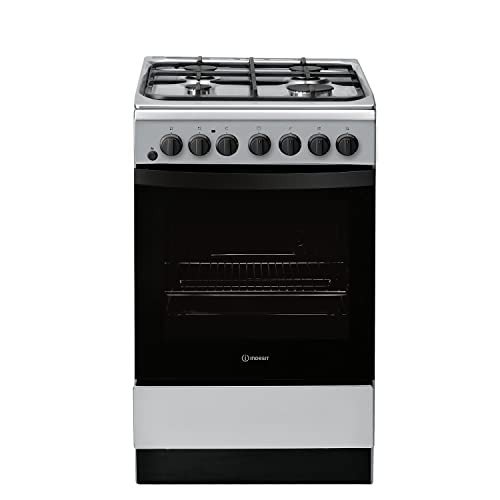Understanding Oven Hobs: The Heart of Culinary Crafting
In the world of modern-day kitchen areas, the oven hob sticks out as an indispensable home appliance. Not just is it a main component for preparing a variety of meals, but it also influences kitchen looks, performance, and performance. This short article explores the types of oven hobs, their functions, benefits, and maintenance pointers. Additionally, it addresses some regularly asked questions to provide a thorough understanding of this necessary kitchen appliance.
Kinds Of Oven Hobs
Oven hobs can be categorized into several types based upon their energy source and style. Comprehending these variations can assist consumers make informed choices when choosing the ideal hob for their kitchen needs.
1. Gas Hobs
Gas hobs use gas or lp as fuel, offering accurate temperature level control and rapid heat. They are favored by numerous chefs for their capability to provide visual feedback through flame.
Pros:
- Quick heat-up time.
- Precise temperature level changes.
- Suitable with all types of pots and pans.
Cons:
- Requires a consistent gas supply.
- Safety interest in open flames.
- Needs more upkeep.
2. Electric Hobs
Electric hobs are powered by electricity and function smooth glass or ceramic surfaces. They often are available in 2 types: coil and strong.
Pros:
- Sleek appearance.
- No open flames, minimizing safety threats.
- Easy to clean up.
Cons:
- Slower to warm up and cool down.
- May need specific cookware (induction).
- Some may have irregular heat circulation.
3. Induction Hobs
Induction hobs use electro-magnetic energy to straight warm pots and pans. They only work with ferromagnetic cookware.
Pros:
- Very energy-efficient.
- Quick cooling and heating times.
- Safe, as the surface area stays relatively cool.
Cons:
- Limited to particular kinds of cookware.
- Higher initial expense.
- Can produce noise when in usage.
4. Solid Plate Hobs
These electric hobs feature solid metal plates that heat up and retain heat for cooking.
Pros:
- Durable and dependable.
- Uncomplicated operation.
Cons:
- Takes time to heat up.
- Less efficient than induction and gas models.
| Hob Type | Heat Source | Visual appeals | Maintenance |
|---|---|---|---|
| Gas Hobs | Gas | Standard | Moderate |
| Electric Hobs | Electricity | Modern/Sleek | Low |
| Induction Hobs | Electromagnetic | Contemporary | Low |
| Strong Plate Hobs | Electrical power | Classic | Typical |
Functions to Consider When Choosing an Oven Hob
When choosing the perfect oven hob for your kitchen, there are a number of essential functions to consider. These consist of:
- Size: Ensure the hob fits the designated area in your kitchen.
- Number of Burners: Consider your cooking design and how many burners you'll need.
- Control Type: Look for easy to use controls, whether touch-sensitive or knobs.
- Safety Features: Many contemporary hobs consist of security procedures like flame failure devices or kid locks.
- Energy Efficiency: Choose energy-efficient designs to minimize energy costs and decrease your environmental impact.
Benefits of Using an Oven Hob
The oven hob supplies a number of advantages that deal with both amateur cooks and professional chefs. Here are some key benefits:
- Versatility: Whether boiling, frying, simmering, or sautéing, an oven hob accommodates numerous cooking strategies.
- Convenience: Many hobs included extra functions like timers and automatic shut-off systems for included convenience in busy kitchen areas.
- Enhanced Cooking Control: The instant heat reactions of gas and induction hobs enable much better control over cooking temperatures.
- Design Enhancement: Modern hobs can boost the general aesthetic of a kitchen, adding a modern touch.
Upkeep Tips for an Oven Hob
To ensure the longevity and effectiveness of an oven hob, correct upkeep is vital. Here are some upkeep pointers:
Regular Cleaning:
- Use a soft cloth and mild detergent to tidy surfaces after each usage.
- For induction and ceramic hobs, prevent abrasive cleaners to prevent scratching.
Examine for Wear and Tear:
- Inspect rubber seals and connections in gas hobs regularly for any damages or leaks.
- Ensure electrical connections are safe in electric hobs.
Professional Servicing:
- Schedule regular upkeep checks with a certified service technician to prevent major concerns.
The oven hob is an essential part in any kitchen, functioning as a focal point for cooking ventures. Whether picking gas, electric, or induction, understanding the different types, features, and maintenance requirements is important for making a knowledgeable decision. A well-chosen hob not just improves cooking efficiency however likewise enhances the total kitchen experience.
Often Asked Questions (FAQs)
1. What kind of hob is best for a beginner?
Electric hobs are frequently favored by beginners due to their ease of usage and maintenance.
2. Can I use all pots and pans on an induction hob?
No, induction hobs need ferromagnetic cookware for them to work properly.
3. How do Sales Ovens know if my gas hob is working efficiently?
Routinely inspect for even flame distribution and listen for any hissing sounds that may show leakages. If in doubt, consult a professional.
4. Is a higher rate constantly much better for hobs?
Not always. While higher-priced designs might offer sophisticated features, a number of mid-range products offer outstanding efficiency and longevity.
5. Can I set up a hob myself?
It is recommended to employ a professional, specifically for gas hobs, due to safety issues and local regulations.
By understanding the subtleties of oven hobs, home cooks can make an educated choice that lines up with their culinary aspirations and kitchen styles. Picking the right hob boosts both the cooking experience and kitchen looks, making it a crucial investment for any home.

